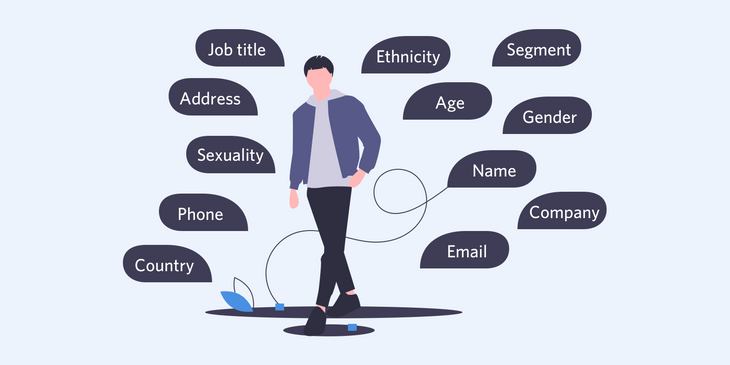Participant attribution in user research reports: what to avoid
 Peter ParkesCo-founder
Peter ParkesCo-founder
As a researcher, you almost certainly use quotations from research participants in your reports.
The question is: how do you attribute these quotes?
Let’s take a look some of the information you could include alongside a quote:
- Name
- Gender
- Age
- Place/country of residence
- Address
- Phone number
- Email address
- Customer/audience segment
- Organization they work for or represent
- Job title
- Ethnicity
- Dietary requirements
- Sexuality
- Medical history
As you can see, these range from the reasonably anonymous to the highly personal, and some might seem slightly ridiculous at first glance.
However, there may be situations in which some of that data is important, and here are some examples:
- Dietary requirements: if you work in a food business, knowing whether a particular quote came from a vegan vs. someone who eats fish vs. someone who eats just about anything might be useful
- Sexuality: if you’re building a dating app, it might be useful to understand how user preferences and behaviour differ across the spectrum of sexual identity
- Medical history: if you’re building a service for people with Type 1 diabetes, it might be useful to know when they were diagnosed and what treatment they’re receiving
Of course, there will also be situations where that information is completely irrelevant.
So how do you decide what information to include in your participant attribution?

1 Don’t require consistency in participant attribution across your organization or even your team
Different projects, different contexts and different research goals may all demand different types of attribution.
For example, if you’re in that food business in the example above, your research with consumers might well demand that you record their dietary requirements. But in your research with suppliers, that data becomes much less relevant.
If you require consistency, you’re likely to end up over-attributing, i.e. including information that isn’t necessary. This is a problem for the following two reasons.
2 Keep visible attribution detail to a viable minimum to reduce unconscious bias
The more detail you include in attribution, the more likely it is that the audience for your research will start to read too much into it. They might make assumptions based on the attribution data, and so by removing it you reduce the risk of bias in interpretation – whether unconscious or conscious.
Of course, it may be that there are patterns that you could spot, but remember that this is small sample size qualitative research we’re talking about rather than survey analysis. And if you do happen to have enough data to build a larger sample, by all means use it, but don’t display it to everyone.
Additionally, there are some attributes that should never be broadly visible, such as phone numbers and email addresses.
3 Names are (almost) always redundant
It’s tempting to use names as a shorthand way of referring to research participants – “remember that quote from Alison from that first batch of interviews we did” – and this is very natural behaviour for people involved in the research itself.
But names are just one additional piece of personal data that are a burden to store, and that provide very little real value to the consumers of the research. After all, does it matter whether you’re designing for Alison or Andrew if they’re in the same customer segment and have the same underlying needs?
The one exception to this rule is in a B2B context. It may sometimes be helpful to identify a specific customer as this helps bring additional context to the quote for people who know the person in question.
Finally, these are suggestions rather than rules, and we’d be very interested to hear whether you and your organization has any formal policy in place.
Happy attributing!
Footnote on personal data:
Storing personal data (or personally identifying information – PII) is potentially problematic for two reasons:
- It increases the potential damage done if that information is accidentally revealed to someone who shouldn’t have seen it. This could be through a technology-related security breach, but could also be simply because you end up showing a report to someone outside of your team or organization.
- In many jurisdictions, including parts of the US, Canada, the EU, Switzerland, Australia and New Zealand, storing and handling personal data imposes additional operational requirements. Not storing personal data simplifies processes and reduces the overall compliance burden on research.